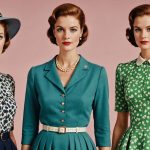The Relationship Between Women’s Fashion Trends and Lifestyle in the UK
Fashion in the UK acts as both a mirror and a mold for women’s lifestyle choices. UK fashion trends often reflect prevailing social norms, signaling shifts in attitudes toward work, leisure, and self-expression. For example, the rise of sustainable fabrics in UK fashion trends corresponds with growing environmental awareness, influencing how women incorporate eco-friendly practices into daily routines.
These trends don’t just reflect lifestyle; they actively shape it. Clothing styles encourage behaviors—athleisure wear promotes active lifestyles, while bold, statement pieces empower confidence and assertiveness in social and professional settings. As women adopt these fashions, their lifestyle choices adapt accordingly, aligning with the trends’ embedded values and functionality.
Also to see : How Can the UK Fashion Scene Influence Your Personal Style?
The relationship between fashion and social norms is deeply reciprocal. Emerging UK fashion trends can challenge traditional expectations, encouraging more fluid gender roles or diverse cultural expressions. In turn, societal changes around gender equality and multiculturalism inspire new trends, creating a continuous cycle of influence.
Recognizing this interconnected dynamic helps to understand how UK fashion trends contribute to evolving lifestyles. These trends act as both catalysts and reflections of broader social changes, influencing not only what women wear but how they live.
Also to see : What Are the Best UK Cities for Fashion Inspiration and Shopping?
Current and Noteworthy Women’s Fashion Trends in the UK
Delving into contemporary UK fashion, recent trend analysis reveals a dynamic blend of innovation and tradition shaping the British fashion scene. This season, the spotlight lands on oversized tailoring, vibrant color blocking, and textured fabrics like boucle and velvet, resonating strongly across both runway shows and high street collections.
At recent fashion weeks, designers showcased bold silhouettes that challenge conventional shapes, including voluminous sleeves and exaggerated shoulders. These elements are rapidly being embraced by high street retailers, making them accessible to a broader audience eager to experiment within the contemporary UK fashion framework.
Key influencers, from fashion bloggers to celebrities, amplify these trends, serving as vital conduits between designers and consumers. Their endorsements translate into tangible shifts in purchasing behavior, confirming their significant role in trend analysis. By consistently showcasing these styles on social platforms and at public events, they bridge the gap between avant-garde concepts and everyday wear.
Understanding these trends is crucial for anyone involved in the British fashion scene, ensuring responsiveness to evolving consumer preferences and market demands. Keeping pace with this trend analysis offers valuable insight into the current women’s fashion landscape in the UK.
Fashion’s Impact on Social Interactions and Self-Expression
Fashion plays a crucial role in self-expression and shaping identity, especially within UK women’s fashion. Through clothing choices, women communicate their individuality and values without uttering a word. This silent dialogue fosters a sense of empowerment, allowing personal style to reflect inner confidence and unique personality traits.
Trends influence not only individual wardrobes but also social dynamics. Friendships and social events often revolve around shared style interests, which helps reinforce group identities. For example, adopting a popular trend can create a sense of belonging, while distinct fashion choices may highlight one’s desire for individuality. This dynamic interplay fuels both cohesion and diversity within social circles.
The connection between fashion and confidence is particularly strong in the UK, where lifestyle often blends traditional elegance with modern innovation. Wearing outfits that resonate with personal tastes can boost self-esteem, making socialization more comfortable and authentic. As a result, fashion becomes a powerful tool for navigating social settings and expressing one’s true self.
Understanding how fashion intertwines with socialization highlights its importance beyond aesthetics—it is a key component in building identity and enhancing interpersonal connections among women in the UK.
Career Choices and Professional Life Influenced by Fashion
Fashion plays a pivotal role in forming a professional image, especially for UK career women aiming to make a strong impression. Workplace fashion is not just about clothes; it communicates confidence, attention to detail, and respect for company culture. For many, adapting fashion trends to suit different work environments enhances their professional persona and can even support career advancement.
In corporate settings, tailored suits and muted colors often convey authority and reliability, while creative industries may encourage more expressive and trend-forward choices. This variation requires UK career women to navigate fashion thoughtfully to align with workplace norms without compromising personal style.
Industries such as finance and law in the UK demand a polished, conservative look, meaning workplace fashion here directly impacts how colleagues and clients perceive competence and trustworthiness. Meanwhile, sectors like media and design embrace bold statements, allowing professionals to showcase individuality and creativity through their attire.
Understanding the nuances of workplace fashion enables UK career women to strategically select outfits that boost credibility and foster positive professional relationships. Mastering this balance between trend adaptation and appropriateness ultimately supports career growth and reinforces a desirable professional image.
Cultural and Psychological Effects of Fashion Trends
Fashion trends in the UK women’s scene profoundly affect cultural impact and reshape societal values. Trends often challenge traditional norms, encouraging expressions of individuality while reflecting broader cultural shifts. For instance, embracing sustainability in fashion has altered cultural priorities, urging a move from consumption to conscious choices.
The psychology of fashion plays a crucial role in how women perceive themselves. Wearing trendy clothing often boosts confidence and self-esteem by aligning personal identity with prevailing styles. However, it can also pressure individuals, fostering body image concerns when trends emphasize idealized forms or exclusive aesthetics. This dual nature highlights fashion’s power over mental well-being.
Societal influences amplify fashion trends through various media channels. Television, social media, and influencers act as conduits, accelerating trend propagation across communities. In the UK, lifestyle magazines and platforms spotlight emerging styles, shaping collective attitudes and behaviors. This cycle fosters a dynamic fashion landscape where cultural narratives and psychological responses constantly interact.
Understanding these dimensions helps us appreciate fashion beyond surface appearances. It is a reflection of cultural values and a psychological experience that helps individuals connect, express, and evolve within society.
Choosing the Best Robot Vacuum for Your Home
When selecting a robot vacuum, prioritize models with strong suction power and efficient navigation systems. These features ensure thorough cleaning and can easily handle different floor types, from carpets to hardwood. Look for robot vacuums equipped with smart mapping capabilities, which allow the device to identify and clean specific rooms methodically.
Consider models offering multi-surface cleaning modes. This flexibility enhances performance on various debris types, making your cleaning more effective. For allergy sufferers, choosing robot vacuums with HEPA filters can significantly reduce airborne particles.
Battery life is another crucial factor. Devices with longer runtime cover larger areas without frequent recharges, improving convenience. Some advanced models automatically return to their charging docks and resume cleaning seamlessly after recharging, which is a notable time saver.
Finally, assess the compatibility of the robot vacuum with smart home systems. Voice control through assistants like Alexa or Google Assistant provides hands-free operation, adding to user comfort.
Selecting the right robot vacuum combining these attributes will result in optimal cleaning performance and user satisfaction. Let your choice reflect your home’s specific needs, and enjoy the ease that robot hoovers bring to maintaining a spotless environment.











